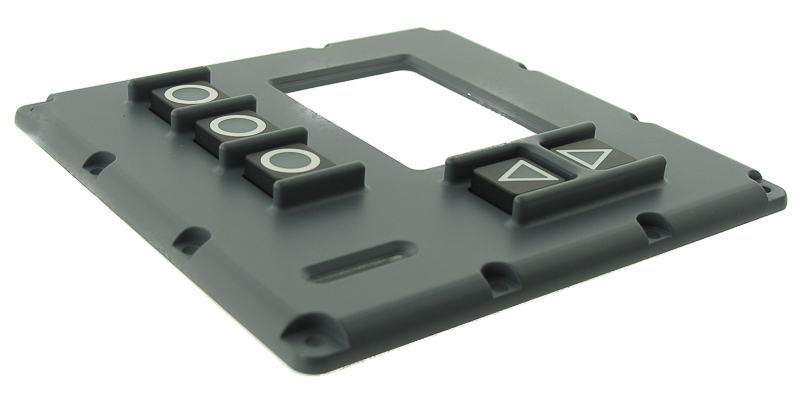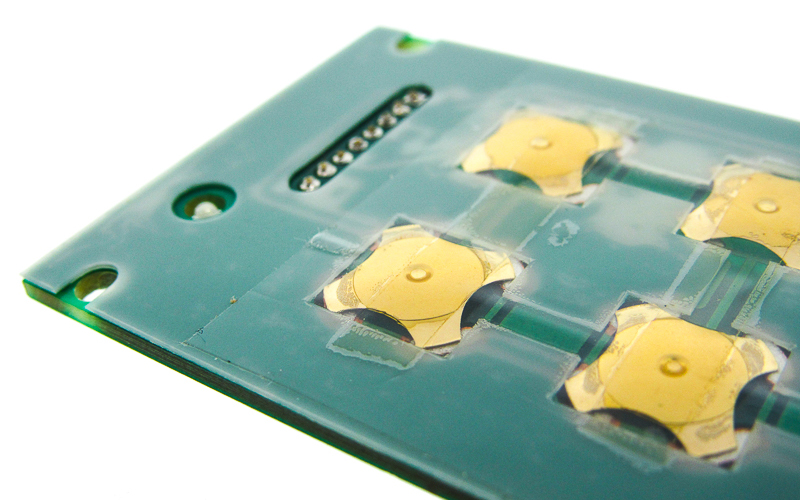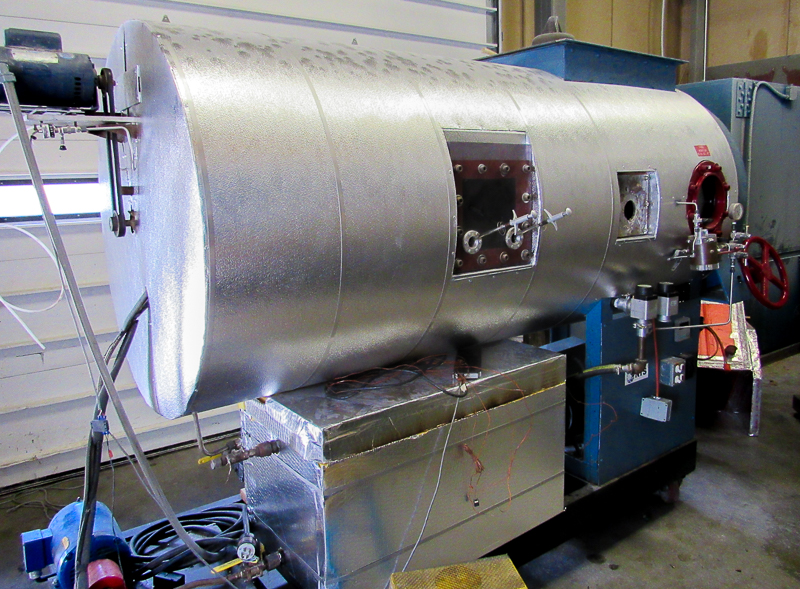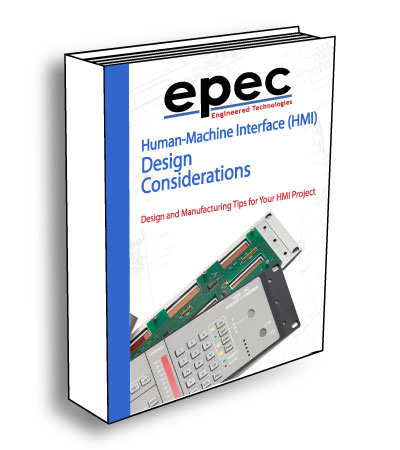Switch Technologies for Military and Aerospace Bezel Assemblies
By Steven J. Goodman, User Interface & Cable Assembly Product Manager
Epec Engineered Technologies
As handheld and panel mounted technologies that support our war fighters continue to evolve, most devices still require some sort of physical button, switch, or keyboard to operate. Exponential advancements in knowledge have yielded artificial intelligence, electromagnetic countermeasure systems, and situational awareness, but the normally open switch remains a staple for Human-to-Machine Interface (HMI) considerations.
To qualify a product on an aircraft, ground based vehicle, or other platform, there are numerous critical design requirements that are spelled out throughout various military specifications. Since their inception, the environmental requirements of MIL-STD-810, RTCA/DO-160, MIL-STD-461, etc., have undergone dozens of revisions to keep up with advancements in technologies. But these revisions have had little to no impact on the use of switches and buttons overall, and because of this, many of the technologies that worked 50 years ago remain effective today.
Important Considerations for Selecting Your Switch
During the development of your custom bezel or faceplate, it is important to decide early on the switch technology to use and how to integrate the switch. Some switches, joysticks, and buttons require customization to mount, while others need a specialized electrical circuit to function.
Changing switch types during development can drive a redesign, which will undoubtedly add cost and time to your project. Spend the time up front to research the different technologies making sure the switch you have selected is the best option.
1. Type of Switch
Whether your project requires a toggle switch, membrane switch, slider, or an ordinary push button switch, these switch technologies vary in size, complexity, and function. One of most important considerations when selecting a switch is to study how it attaches to the rest of your device.
Some off-the-shelf switches like toggle or rocker switches are panel mounted and require a few soldered wires to operate. Other switch types are surface mounted and assembled to a circuit board. If a custom off-the-shelf (COTS) switch is required, spend the time to review availability and lead time concerns.
2. Dust and Water Ingress
Although military specifications such as MIL-STD-810, RTCA/DO-160 are not related to IEC 60529 and the IP rating system, they are similar in terms of defining water and dust ingress protection. How and where the switch is used will determine the levels of dust resilience and waterproofness necessary. A panel mounted switch on a Humvee will be far more susceptible to dust and moisture when compared to a button on a rack-mounted instrument.

Figure 1: Example of machined 6061 aluminum faceplate with silicone keypad.
Some faceplates are designed for these harsh conditions (Figure 1) and incorporate complex sealing systems and potting compounds to seal their switches. For example, toggle switches are available with rubber boots that provide a waterproof seal. Some switches such as dome switches are encapsulated within layers of laminated films that are sealed with strong adhesives. When designed properly, these devices can withstand the blowing sand and wind driven rain requirements of today's military and aerospace standards.
3. Low Temperature Operation
As the temperature falls, materials become stiff and their mechanical flexibility is greatly reduced. Some plastics and metals can become brittle in low temperatures and fail prematurely. Any switch with moving parts is especially susceptible to premature fatigue or failure.
Many projects require operation down to -40 degrees Celsius, which limits design options. Silicone elastomer is used in several types of cold-weather technologies as a rubber boot, keypad (Figure 2), and membrane cover. Silicone is an excellent material choice since it combines low temperature resilience with the flexibility of a gasket to properly seal out the elements. If an off-the-shelf option is required, there are numerous choices for mil-qualified switches that cover the range in switch types.
![]()
Figure 2: Mil-qualified QWERTY silicone keypad.
4. Audible Response
One of the best ways to make sure a switch is pressed is for the switch to emit an audible sound or click when depressed. A speaker can be wired into your system allowing for a key registration event to trigger a beep or other noise. If a digital sound is generated, be sure to define the volume and waveform.
For some applications, especially for handheld or body-worm products, there may be a requirement for the switch to operate silently. Some mechanical switches like tactile switches make noise on their own just by operating. When properly designed into a system, dome switches (Figure 3) can make a subtle click or snap sound providing the user a confirmation that the button was successfully pressed.

Figure 3: Example of gold-plated dome switches on a printed circuit board.
5. Shielding
Shielding is typically designed into bezels and front panels to help protect the delicate electronics within. Shielding is also added to these types of products to keep the unwanted emissions of adjacent electronics out. Although the switches within bezels and front panels themselves are not at high risk of EMI interference, the switches supporting systems may be highly susceptible to radiated and conducted emissions.
Adding conductive films and foils is one option to shield the front panel. These types of shielding foils must be designed such that they do not negatively impact the complex backlighting schemes that are present.
6. High-Vibration Environments
Many electromechanical products including switches are ruggedized to survive mil-aero vibration and shock profiles. Whether the vibration is coming from the turbulence of an aircraft, or the blade-pass frequencies of a rotary winged aircraft, the rough ride produced can impact switch performance and life. Some mil-hardened toggle switches that are designed for extreme environments are rated for sine vibration profiles up to 100g's.
7. Explosion Proof
When operating electronics within a sealed volume like a cockpit or fuselage, it is important that there are no exposed live electrical components or potential arcs. This fact is especially true if fuel or another explosive mixture is nearby.
Certain types of switches can produce a small electrical arc, so it's important to consider the qualification requirements before selecting a switch technology. The explosive atmosphere test (Figure 4) as defined by today's military and aerospace standards demonstrates that your device will not create an explosion while operating in a fuel rich atmosphere.

Figure 4: Example of an explosive atmosphere test setup.
8. Backlighting and Dimming
Some switch panels are critical for use in both light and dark conditions. Designers incorporate clever backlighting schemes to allow for switch operation and readability in a wide range of environments.
For an avionics panel that is mounted within the cockpit, the bezel switches may have a Night Vision Information Systems (NVIS) or Night Vision Goggle (NVG) backlighting requirement. These designs are typically specialized and in compliance with MIL-STD-3009, a specification that governs the night vision requirements for aircraft.
LEDs and other NVIS films are typically designed in concert with the switches to create a uniform and properly lit backlighting scheme. Some backlights are dimmable, but this is typically driven by the host PCBA or a pulse width modulation (PWM) circuit.
9. Weight
Weight is a concern for the majority of military and aerospace projects. Since switches by nature are generally small, they do not represent major drivers in weight estimates. Most COTS switches will list their measured weight values on the corresponding data sheets. Stainless steel dome switches themselves weigh fractions of a gram and are a small percentage of the total system weight when compared to items such as fasteners, machined plates, or wire. The switches' weight should be analyzed, but only scrutinized as a weight driver if a specialty switch or feature is required.
10. Communication Protocol
For simple projects, the switches can be wired into an ordinary 5VDC low voltage system and operate as desired. The switches are typically laid out in an array and are wired all with one common ground pin. For example, if you need 4 switches, a 5-pin connector would be sufficient.
For higher switch quantities, a matrix can be established to increase the number of switches without a major impact on the connector pin count. But for some projects with 20+ switches, or where space is limited, a matrix encoder can be used to convert the switching data to a common communication protocol such as RS422.
Summary
There are thousands of types of switches, and there are even more names or variants used throughout the industry. It's important to clearly define what type of switch or keypad is required, since any ambiguity will slow down your project. If your program is early on, and you have the time and budget to research switch options, spend the time to investigate the different options available and make an informed decision. A quick conversation with a full-service manufacturer like Epec may help steer your design towards an option that is both less expensive and shorter lead time.
Looking For a Reliable HMI Supplier?
With working on countless military and aerospace applications, our team of engineering can help you to design and manufacture various types of human-machine interfaces for both new and existing programs.
Request a Quote Request Design Support


